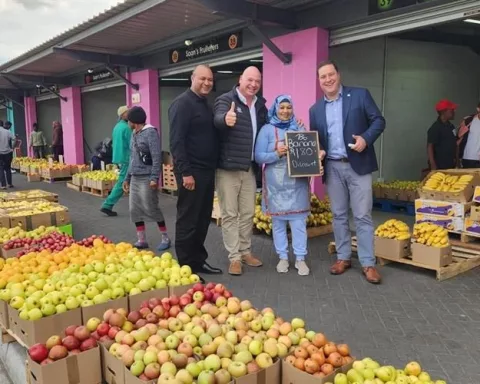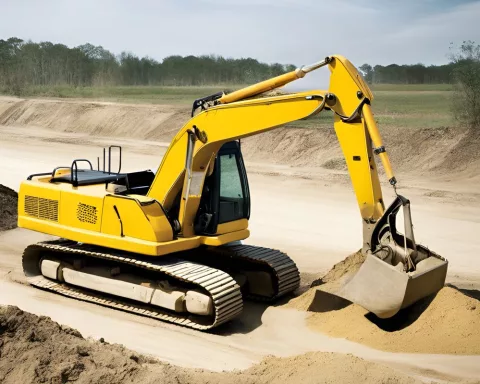The Koeberg Sewer Pump Station is facing challenges due to sand and foreign debris intrusion, causing regular breakdowns and overflow. The city is addressing the issue by installing a sand trap and screening facility, increasing capacity, acquiring new pumps, and reassessing the berm design. A long-term improvement plan costing R118 million is projected to be completed by 2028. The city has also implemented temporary measures such as a diesel-operated mobile pump and a rising main to manage overflows during peak periods. The goal is to ensure efficient sewage management and protect the environmental health of the Milnerton Lagoon.
How is the Koeberg Sewer Pump Station addressing operational challenges?
The Koeberg Sewer Pump Station is addressing operational challenges caused by sand and foreign debris intrusion through various temporary measures, including the installation of a sand trap and screening facility, increasing capacity, and acquiring new pumps. The city is also reassessing the berm design to improve spill containment from the pump station. The long-term improvement plan for the station is projected to cost R118 million and expected to be completed by 2028.
Addressing the Challenges
The Koeberg Sewer Pump Station, a crucial part of the city’s infrastructure, has been grappling with operational challenges due to the intrusion of sand and foreign debris. These unwanted elements have created havoc on the pumps, resulting in regular breakdowns and instances of overflow. Despite the city’s persistent efforts to keep the pumps operating in top condition, the problem continues to persist.
These infrastructural issues have had a negative impact on the Milnerton Lagoon. Regardless of substantial restoration efforts, pollution in the lagoon remains a problem because of these unexpected disruptions.
The key factor attributing to the sand intrusion stems from a dozen pipeline collapses within [Montague Gardens](https://capetown.today/the-rugby-championship-showdown-springboks-vs-all-blacks/), which have affected the 900mm diameter fibre cement pipeline. These pipelines have been in service for roughly half a century, and their deterioration over the years has led to these significant collapses.
Root Causes and Preliminary Solutions
High sewage flows have added to the challenges, exerting additional pressure on the entire sewer system. The deep placement of the pipelines, approximately 5 meters under the ground, adds to the complexity, making all repair efforts a formidable task.
The Milnerton Bulk Sewer Improvement Project, a costly R470 million initiative, was instrumental in pointing out the necessity for a gradual replacement of the region’s ageing sewage infrastructure.
The city has drawn up a long-term improvement plan for the Koeberg Pump Station with a projected expenditure of R118 million. The project will start with the installation of a sand trap and screening facility, with the first phase expected to wrap up by 2025. The pump station is then set to undergo reconstruction between 2026 and 2028 to boost its total capacity, as shared by Councillor Zahid Badroodien, the city’s Mayoral Committee Member for Water and Sanitation.
Interim Interventions and Future Prospects
While these permanent measures are in the pipeline, the city has taken proactive steps to manage overflows during peak periods through several temporary solutions. These include:
- A diesel-operated mobile pump has been set up to ease pressure. This pump acts as a standby and is activated as required to handle sewage overflows.
- A 610m-long rising main, connected to the mobile pump, has been completed. This main is designed to divert excessive flow directly from the Koeberg Pump Station to Potsdam, thereby reducing the burden on Koeberg’s four pumps.
- The city has acquired four pump impellers to reduce redundancy. Additionally, four new pumps for the Koeberg Pump Station and two for the Racecourse Pump Station are scheduled for delivery in May 2024.
- As a reaction to the problems, the internal Engineering and Asset Management team collaborates closely with the Pump Station Maintenance team to perform mechanical repairs and bring the pumps back to full operation.
- Repair work on the Montague Bulk Sewer line has been successfully completed.
- The Water and Sanitation department is reassessing the berm design to improve spill containment from the pump station. Updates concerning the progress will be shared as the process unfolds.
These detailed measures, which integrate temporary fixes and long-term advancements, demonstrate the city’s dedication to resolving the operational issues at the Koeberg Sewer Pump Station. The primary objective is to ensure efficient sewage management and protect the environmental health of the Milnerton Lagoon.
What is the impact of the Koeberg Sewer Pump Station’s operational challenges on the environment?
The operational challenges faced by the Koeberg Sewer Pump Station, such as regular breakdowns and overflow due to sand and foreign debris intrusion, have had a negative impact on the environmental health of the Milnerton Lagoon. Despite substantial restoration efforts, pollution in the lagoon remains a problem.
What is the cause of sand and foreign debris intrusion in the Koeberg Sewer Pump Station?
The intrusion of sand and foreign debris in the Koeberg Sewer Pump Station is caused by a dozen pipeline collapses within Montague Gardens, which have affected the 900mm diameter fibre cement pipeline. These pipelines have been in service for roughly half a century, and their deterioration over the years has led to these significant collapses.
What are the temporary measures implemented by the city to manage overflows during peak periods?
The city has implemented several temporary measures to manage overflows during peak periods, including setting up a diesel-operated mobile pump as a standby, completing a 610m-long rising main, acquiring four pump impellers and scheduling delivery of four new pumps, performing mechanical repairs, and reassessing the berm design to improve spill containment from the pump station.
What is the long-term improvement plan for the Koeberg Sewer Pump Station?
The city has drawn up a long-term improvement plan for the Koeberg Sewer Pump Station, with a projected expenditure of R118 million. The plan includes the installation of a sand trap and screening facility, reconstruction of the pump station to boost its total capacity, and reassessment of the berm design to improve spill containment. The project is expected to be completed by 2028.
What is the cost of the Milnerton Bulk Sewer Improvement Project?
The Milnerton Bulk Sewer Improvement Project, a costly R470 million initiative, was instrumental in pointing out the necessity for a gradual replacement of the region’s ageing sewage infrastructure.
When will the new pumps for the Koeberg Pump Station and Racecourse Pump Station be delivered?
The city has acquired four new pumps for the Koeberg Pump Station and two for the Racecourse Pump Station, scheduled to be delivered in May 2024.












